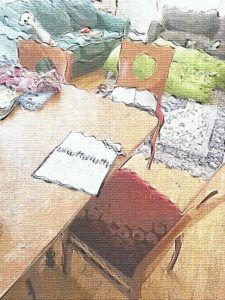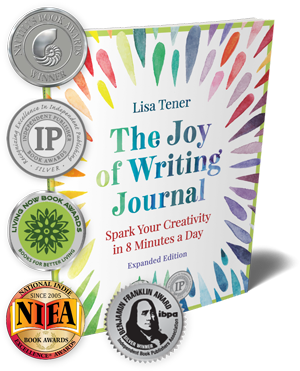Writing Tips from Real Life
Writing tips can help you transform ho-hum writing into a big Hallelujah! After I sent some feedback and writing tips to a client, I spent this morning editing her revised manuscript. I was thrilled to see the author’s writing improve so dramatically from one draft to the next.

Eureka! Whatever I told her, I realized I should share with you today. Every writer loves to know what she (or he) can do better to improve her writing and make it sing. These writing tips can make a world of difference in your own revisions.
Today’s writing tips all focus on making the words leap out from the page and form a picture for your readers. Whether you are writing a how-to book, memoir or even a novel, you will truly draw your readers in if you paint a scene and share stories.
Sure, your book may have its abstract moments, but here we will focus on 7 writing tips that make your stories come to life—whether you are writing brief anecdotes that support your self-help tools or part of a larger narrative, such as a memoir.
[bctt tweet=”7 Quick Writing Tips To Polish Your Work ” username=”LisaTener”]

- Paint the scene at the beginning. Have you ever had the experience of reading a story and imagining the character in one place, only to find three paragraphs later that the room was dark, not light; the character was surrounded by people, not alone as you had thought; and that it took place in the car, not the office? Not only does such construction confuse your readers, it frustrates them and takes them out of the magical world you are creating (yes, even in a brief self-help anecdote!). Instead, picture the scene in your mind and make the essential details clear up front.
Writing vs. Editing
In an initial writing phase, it’s fine to keep this information in mind, but you can also let it go and just focus on getting your words on the page. Once you have a draft, use these 7 tips to edit that draft and make the writing more powerful, specifically painting a picture your readers can see, hear, smell, taste, feel and sense!
Here is more advice on how to tighten your writing. You may also hit a point when you’ve done what self-editing you can and it’s time to find an editor to take you further along that path. This post will help you hire an editor, know what to look for and what to ask them.
Your Bonus Writing Tip
Enjoy yourself. When you have fun writing and editing, your readers get to share in that fun. Write or edit outside (if it’s warm enough). Or write and revise somewhere cozy and inspiring. All the things you do to bring yourself into a light and happy space will bring light into the writing and reading experience—without your having to try. Your writing just naturally picks up your state of being.
One thing I do to get myself into a state of flow before working on my blog posts, articles and books is to journal. The Joy of Writing Journal: Spark Your Creativity in 8 Minutes a Day can help you get into a state where writing flows with ease. Check it out!
Do you have any writing tips or anything you recently did that improved your writing? Please share. Feel free to ask your questions below as well.



I love all your tips but especially the bonus tip – how I’m feeling – comfortable, at ease, cosy – is reflected in the words I put on paper, this makes so much sense, thank you for sharing!
Thanks Miriam. It’s really fun when you start to see the connection between the writing mood and reading mood! As authors we have more influence than we realize. And with that comes great responsibility, to paraphrase Voltaire. I had to look that one up, but apparently, before Uncle Ben said this in Spiderman, Voltaire said it!
I love these tips, Lisa. Thank you!
Thanks, Christine, How is your book coming?
A great piece, Lisa. Thanks for these great ideas that I then felt eager to share with the four Facebook writing groups I belong to.
Your “Thanks for Sharing” comment at the end is a nice touch that I want to figure out how to.
Thanks, Nora. I am going to ask my web designer, Rachel Vane, how you can do that. It may be a wordpress sharing plugin. Do you use wordpress for your blog? And when you mention the “Thanks for Sharing” do you mean the “Sharing is caring” comment along with the social sharing buttons?
Hey ladies! Thanks for the shout out, Lisa. 🙂 It is a plugin, called “Shareaholic”: https://wordpress.org/plugins/shareaholic/. Be sure to read thoroughly about all the settings and how to turn off their ads. It’s a decent plugin, but can be a little tricky to figure out how to turn off all the bells and whistles.
Thanks, Rachel, for weighing in and the additional advice.
Amazing blog! I was browsing the web, when I saw your blog. The last part made an impact on me. Do not forget to cherish the things that make you happy. I agree! Being a writer, I love what I am doing. I’m very excited to share this. Cheers!
Hey Lisa,
Such a useful information to the writers who are new In writing field.
Thanks for sharing this info.